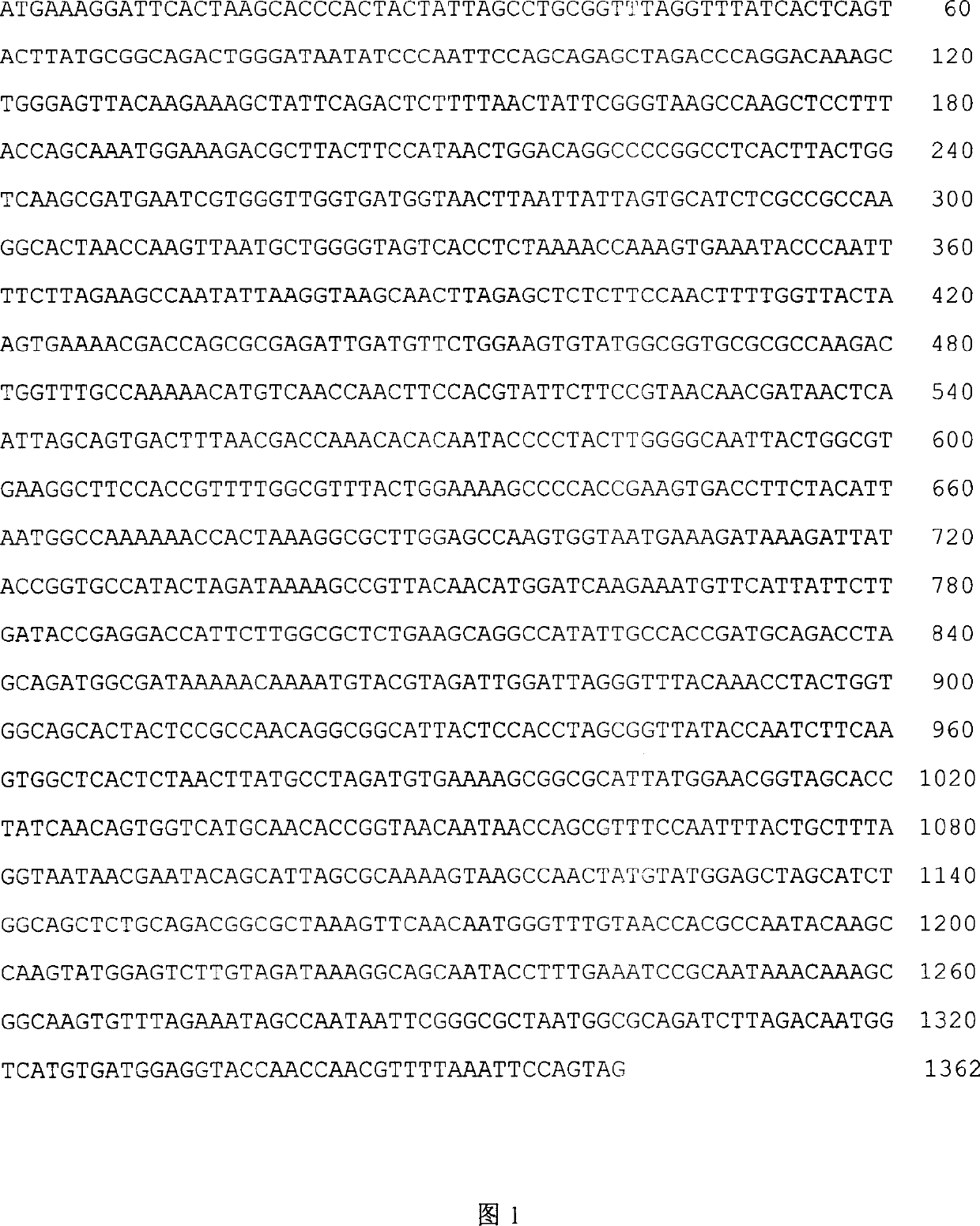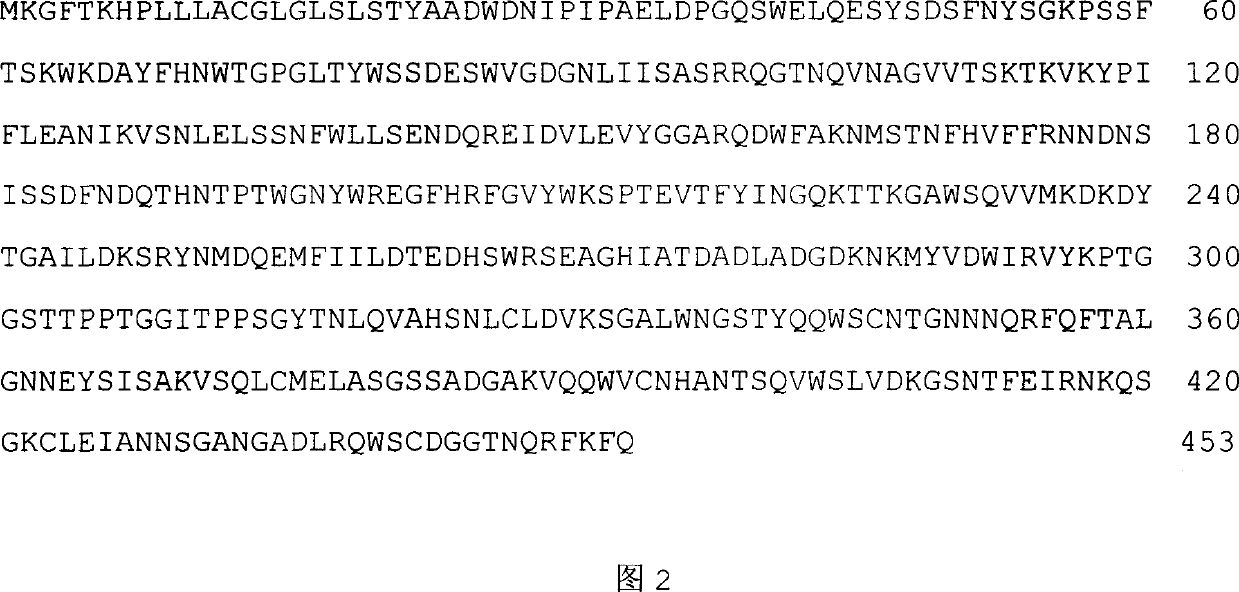Beta-agaropectinase gene aga, its preparation method and application
An agarase and gene technology, applied in the field of β-agarase gene agaA, can solve the problems that hinder the development and application of agar oligosaccharides, limit the application range, and be expensive, and achieve low cost, easy purification, and stability good sex effect
- Summary
- Abstract
- Description
- Claims
- Application Information
AI Technical Summary
Problems solved by technology
Method used
Image
Examples
Embodiment 1
[0017] The β-agarase gene agaA of Pseudomonas CY24 was cloned by shotgun method, and the specific operation was as follows: Cultivation of Pseudomonas in Luria-Bertani (LB) medium containing 1% (weight percentage) NaCl (Pseudoalteromonas sp.) CY24 to the end of the logarithmic phase, extract genomic DNA. The genomic DNA was digested with restriction endonuclease HindIII, agarose gel electrophoresis was used to recover a 2.5-7kb fragment, which was ligated with the pBluescript II KS(+) plasmid fragment that was completely digested with HindIII and dephosphorylated. Then transfer the ligated product into competent cells of Escherichia coli DH5α according to the standard calcium chloride method, and cultivate on solid medium (containing ampicillin, X-gal, IPTG) with agar as the sole carbon source, and use whether to produce hydrolysis Circle the positive transformants with agarase activity. Cultivate one of the positive transformants, extract its plasmid DNA by standard alkaline lysi...
Embodiment 2
[0018] Design the upstream primer (5'GGAATTCCATATGAAAGGATTCACTAAG3') and downstream primer: (5'CCGCTCGAGCTGGAATTTAAAACGTTG3') according to the full sequence of the β-agarase gene agaA that has been obtained, using the genomic DNA of Pseudomonas CY24 as a template and PCR amplification Get the full sequence of β-agarase gene. The PCR conditions were as follows: pre-denaturation at 94°C for 3 minutes, followed by 30 cycles of 94°C for 30s, 60°C for 30s, and 72°C for 60s, and finally extension at 72°C for 10 minutes. Agarose gel electrophoresis showed a specific band at 1.36kb, which was cut from the agarose gel, digested with NdeI and XhoI, and a 1.36kb DNA fragment was recovered after agarose gel electrophoresis. The E. coli expression vector pET-24a(+) was similarly digested with NdeI and XhoI, separated by agarose electrophoresis, and a 5.3 kb DNA fragment was recovered. After ligating it with the 1.36 kb DNA fragment obtained above, the standard calcium chloride was used. Method...
Embodiment 3
[0019] The expression vector pEAG was transformed into E. coli BL21 (DE3) according to the standard calcium chloride method, and the transformants with ampicillin resistance were selected. The plasmid was extracted by the standard alkaline lysis method and digested with NdeI and XhoI to obtain two fragments of 1.36 kb and 5.3 kb, which were the same size as the full-length fragment of the β-agarase gene agaA and the expression vector pET-24a(+), which proved Obtained the E. coli recombinant strain pEAG / BL21 that can express β-agarase efficiently. Example 4 Production of recombinant β-agarase using E. coli recombinant strain pEAG / BL21
PUM
 Login to View More
Login to View More Abstract
Description
Claims
Application Information
 Login to View More
Login to View More - R&D
- Intellectual Property
- Life Sciences
- Materials
- Tech Scout
- Unparalleled Data Quality
- Higher Quality Content
- 60% Fewer Hallucinations
Browse by: Latest US Patents, China's latest patents, Technical Efficacy Thesaurus, Application Domain, Technology Topic, Popular Technical Reports.
© 2025 PatSnap. All rights reserved.Legal|Privacy policy|Modern Slavery Act Transparency Statement|Sitemap|About US| Contact US: help@patsnap.com


